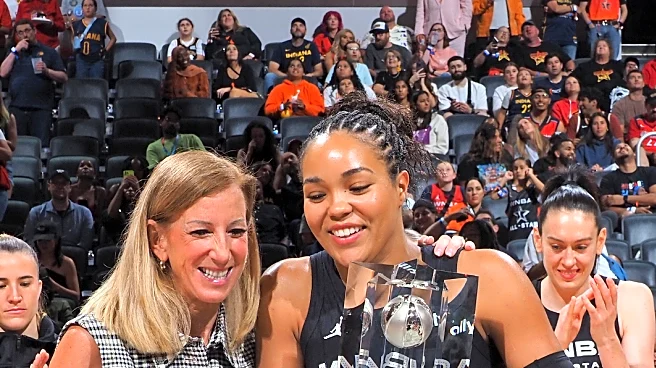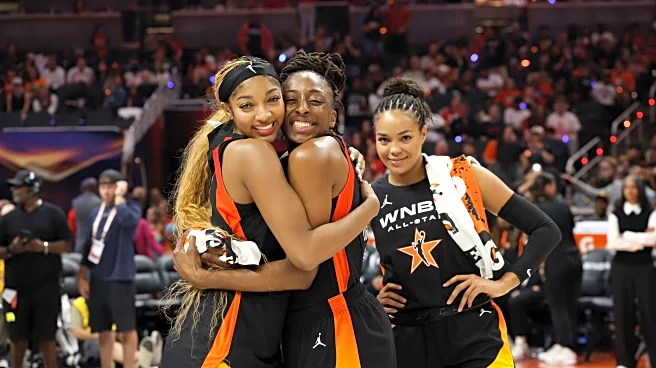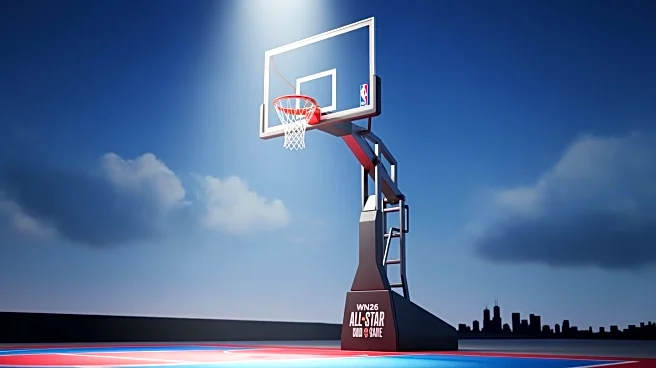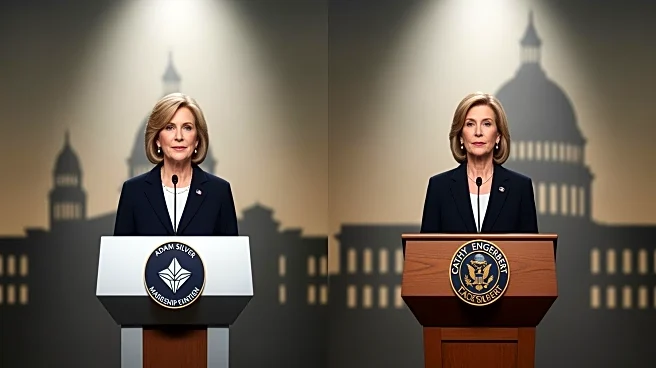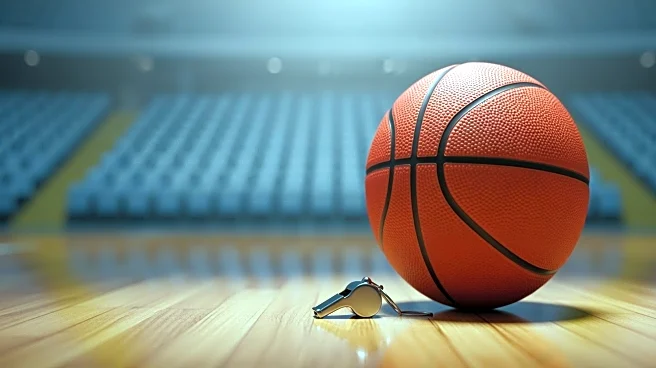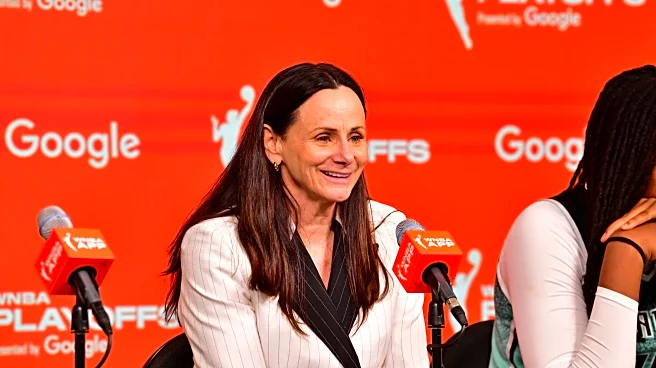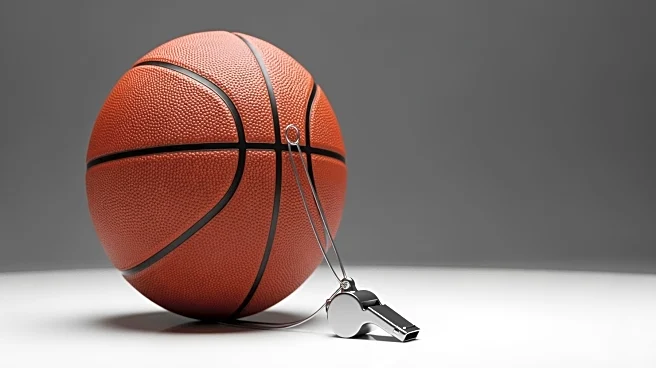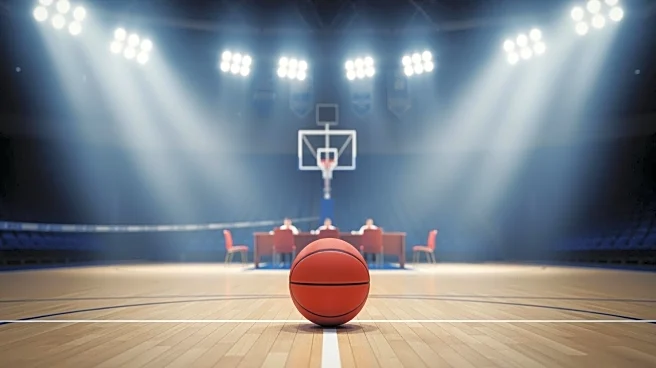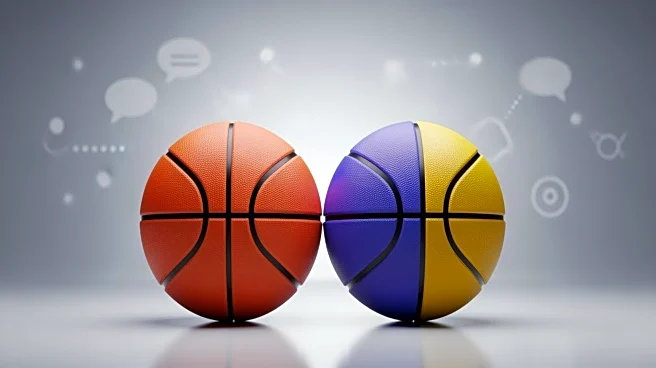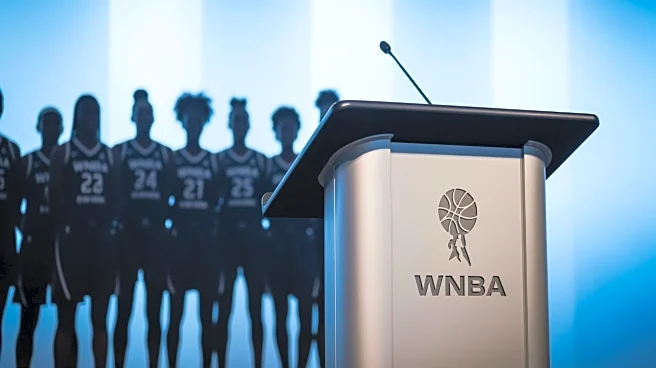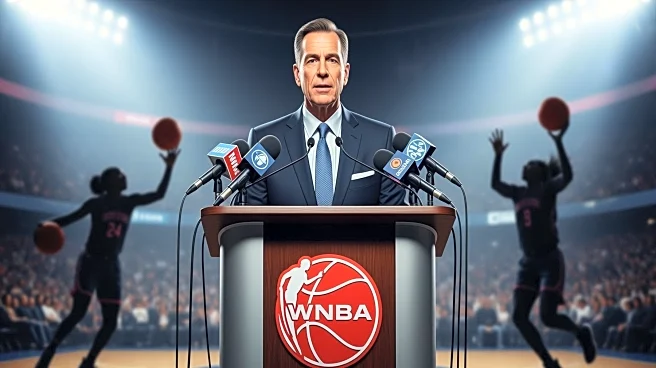Throughout the 2025 WNBA season, players’ dissatisfaction with the state of their negotiations with the league for a new collective bargaining agreement (CBA) smoldered.
The players fanned the flames during the All-Star game, when, following a meeting with the league brass, reportedly attended by around 40 players, that left players wanting more, they wore shirts that read, “Pay Us What You Owe Us,” before the game.
Then, in her now-famous exit interview, Napheesa Collier lit the match, sparking a conflagration
when she claimed that the WNBA’s leadership is “the worst in the world,” in addition to sharing damning comments made by Commissioner Cathy Engelbert during a meeting with Collier at Unrivaled, when the Commissioner allegedly boasted that players, including Indiana Fever star Caitlin Clark, should be grateful for how the league has opened more lucrative financial opportunities to them.
Other WNBA players have not suppressed the fire that Collier, one of the WNBPA’s vice presidents, lit, instead offering their support for her statement. Engelbert shared her rebuttal during her traditional pre-Finals press conference, but her comments only further ignited the dissatisfaction of Collier and the players. While Engelbert suggested she and Collier planned to meet in the coming days, Collier subsequently cancelled, unwilling to meet with Englebert after the Commissioner disputed how Collier characterized their conversations. Sources close to Collier told ESPN that Engelbert’s assertions “pretty much pushed the relationship beyond repair.”
So, as the October 31 expiration date for the current CBA fast approaches, where do things stand between the players and league? Has everything been burnt down? Can the trust be rebuilt and an agreement be reached? Is a work stoppage that could jeopardize the 2026 WNBA season all but guaranteed?
Here’s a look the priorities of the players, the league and what might happen next:
What do the players want?

The shirts donned by players before the All-Star game succinctly expressed players’ overarching priority: “Pay Us What You Owe Us.”
For the WNBPA, what they insist they are owed is not simply higher salaries, an absolute given, but also a greater share of league revenue. The WNBA, in contrast to the NBA, does not use basketball-related income to determine the salary cap; instead, raising the cap by three percent annually. Players, witnesses to the league’s explosive growth, which includes skyrocketing franchise valuations and a lucrative television deal, believe they are entitled to their fair share of this financial windfall.
According to both ESPN and Front Office Sports, the league’s latest proposal does not include a new revenue-sharing model, preserving the current system, where the league achieving certain revenue benchmarks would activate revenue sharing.
The Phoenix Mercury’s Satou Sabally, speaking in a media availability during the WNBA Finals, contended that the league’s stance signals to players that “we’re not part of the growth of the league.” She further explained, “If we continued with this CBA, we would, percentage-wise, go down on our [compensation].”
WNBPA president and Seattle Storm star Nneka Ogwumike echoed Sabally, telling ESPN:
It’s basically the same system that we exist in right now. They’re proposing a system that includes revenue that would grow with the business. When you approach it from the perspective of their response to our proposal, yes, money is more, but ultimately if you look at the growth of the business, the money relative to the percentage of everything is virtually staying the same.
So, the league’s willingness to raise supermax salaries to an estimated $850,000, up from the current supermax of $249,000, and to elevate the veteran minimum to around $300,000, an increase from the current $78,831, is insufficient for players. They want those salaries and the salary cap to be tied to revenue.
Or, they at least want the league to clearly explain why implementing revenue sharing would be unstainable, as “sustainable” has emerged as buzzword for Engelbert when discussing the CBA. Claims that the WNBA and its teams have never turned a profit and remain dependent on the financial support of the NBA long have been used as a cudgel by the league to quell player demands. However, players want the league to prove that, in this era of explosive growth, that the WNBA is still in the red.
But the league has effectively maintained financial murkiness. According to ESPN, “One of the most difficult parts of following the WNBA’s labor negotiations all these years has been getting firm numbers from the league’s side of things. The players have said they don’t always feel like they get that.”
Prioritization stands as the second-most important pillar for players, as they aim to redress an issue they caved on during negotiations for the 2020 CBA. The concept of prioritization, which had a delayed implementation until 2023, requires players who participate in overseas leagues during the offseason to “prioritize” the WNBA by potentially leaving their overseas clubs before the ends of seasons to be present for the start of WNBA training camps. Players who do not abide can be subject to fines or suspension, although there are exceptions for players with less than two years of league experience, as well as for national team obligations.
Sabally has strongly advocated for prioritization, countering NBA Commissioner Adam Silver’s claim that the public back-and-forth between Collier and Engelbert has become “too personal” by highlighting why the CBA negotiations, and prioritization in particular, are personal for players. She asserted during a WNBA Finals media availability:
It is very personal, because the WNBA wants to forbid us to make a lot more money than we’re ever going to make here, what it seems like, in other leagues. People have families; this is our job. We make more money in China, Russia, Turkey, than here, so it is very personal.
Players have conveyed that are committed to fighting for what they believe they deserve, even if it requires a work stoppage. The Washington Mystics’ Alysha Clark, a WNBPA vice president, told The Athletic that players are aware of “how important we are to the continuation of the growth of this league and the success of this league.“ Chelsea Gray, the Las Vegas Aces’ primary WNBPA representative, similarly posited to ESPN, “There’s no growth without the players. So why wouldn’t we have something get done that the players are happy with?”
What does the the league want?

According to WNBPA executive director Terri Jackson, “The league and the teams look to be trying to play the only card they have, and that is running out the clock.”
The WNBPA sees the league as waiting for the players to accede to its demands, which includes a supermax that does not approach or exceed $1 million, a fixed salary cap not unqualifiably tied to WNBA revenue and the preservation of the prioritization rule.
The WNBA countered Jackson’s assertion, with a spokesperson telling The Athletic, “We continue to negotiate in good faith and remain focused on delivering significant increases to salaries and benefits for players while building a league that can thrive for decades for the benefit of all.”
The league, however, is composed of different stakeholders, which, according to FOS, has complicated CBA negotiations. As outlined by FOS:
The WNBA’s stakeholders are divided into three groups. The NBA’s 30 owners control 42 percent of the league, the WNBA owners control another 42 percent and the remaining 16 percent is owned by the investors from the capital raise. Owners like Ted Leonsis [Washington Mystics/Wizards], Joe Tsai [New York Liberty/Brooklyn Nets] and Herb Simon [Indiana Fever/Pacers]—all of whom own NBA teams, WNBA teams, and were part of the capital raise—now have three different stakes in the WNBA.
Engelbert must maintain and manage the support of these stakeholders in CBA negotiations, something that appears to be wavering.
First, that there are three categories of stakeholders is a point of criticism. The capital raise that resulted in the league selling a 16 percent stake to investors was described by league sources to FOS as a “costly mistake” because it severely undervalued the league. The 2022 $75 million capital raise valued the league at $468; the New York Liberty, a single franchise, recently have been valued at $450 million. FOS suggests the league’s value should be in the billions, not less than half a billion.
That some owners are affiliated with NBA teams, while others are not, creates another tricky dynamic. A league source proposed to ESPN:
I think you have some teams that view it as enterprise level, meaning the appreciation of the teams and the growth of the league. And you’ll have some teams think about it like cash flow, and if I have this expense, what does it mean for my bottom line? A lot of times that comes down to how people think about their business—as an investment versus a true business on the day-to-day.
Another source, in contrast, indicated to ESPN that the owners are unified.
They do not, however, appear to be unified in their assessment of Engelbert as a leader, particularly as a communicator. League sources have shared with FOS that the Commissioner’s “strained relationships extend to team presidents and owners.” Speaking to ESPN, one anonymous owner bluntly said, “If I had a vote, I would probably ask for a replacement.” The owner elaborated:
I believe Napheesa’s comments. I think sometimes the approach of [Engelbert’s] message hasn’t always been delivered well. … Anytime there’s been some challenges, whether it’s a player side or even an ownership side as far as questioning things, there can be some of that derogatory tone.
Another owner expressed only conditional support for Engelbert, saying, “If you fire her now, it’s admitting weakness. It’s a terrible look for the league. I can’t stand what [Collier] did. That was a private conversation. It makes me not want to fire her, even though I think she should be fired.”
Team executives also offered their perspectives with ESPN, with one opining, “Change is a must. Either Cathy has to change how she relates to the players, or there has to be a change in that role. It can be worked out, but some things have to change.”
Regardless of Engelbert’s past performance or future prospects, those whose interests reside with the league surely will continue to argue, as one league source told ESPN:
The players are very important. No question. But what they don’t understand is this league is still not that strong. It’s got a long way to go. So you screw up the momentum right now, and you are messing with your livelihoods for future generations.
What’s going to happen next?
Most all reporting indicates that the October 31 deadline will be extended, meaning that the players and league are not on the precipice of a dramatic breaking point.
During the much more amicable negotiations for the 2020 CBA, the players and league agreed to a 60-day extension, which resulted in a mutually-celebrated announcement of an agreement in January 2020.
The Athletic outlines some strategies that could emerge if the sides remain far apart. The league “could eventually try to implement a last-best offer, which could either push the players to vote to strike, and/or lead to the players to begin the 2026 season under an expired contract while continuing to negotiate a new deal.” Alternatively, owners could vote to lock out the players, which would prevent them from signing contracts and engaging in team activities. Players also could follow the example of NBA players during their 2011 CBA negotiations when, as described by The Athletic:
NBA players voted to dissolve their union in order to file two antitrust lawsuits against league owners. Labor law presides when a union is in place, but eliminating the union opens the door to antitrust law and a different negotiating tactic that can put pressure on the league. Twelve days after the NBPA’s legal measure, and following a number of concessions by league owners, the NBA and its players entered into a new deal and the majority of the league’s season occurred.
So, WNBA fans probably need to prepare for a long offseason, where it might be time to learn more than ever anticipated about labor practices and laws, rather than brushing up on your favorite team’s pick-and-roll coverages, 3-point rate or late-game offense.
